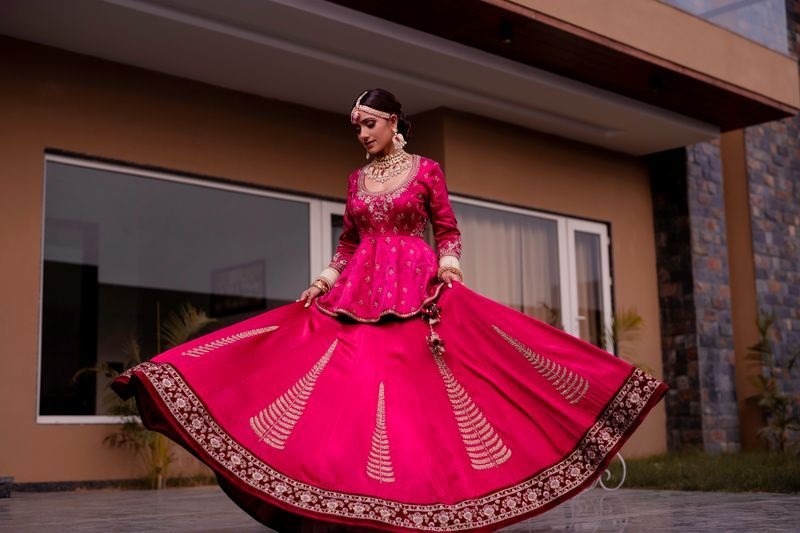India, with its vast cultural diversity, boasts a rich tapestry of traditional wedding attire that reflects the unique heritage and customs of each state. From the vibrant colours of Rajasthan to the intricate weaves of South India, the traditional wedding dresses for women and wedding suits for men vary widely across the country, each embodying its own cultural significance and sartorial elegance.
North India
In North India, the wedding dress or traditional dress for women often includes the graceful saree or the elaborate lehenga choli. The saree, with its six yards of fabric draped elegantly, is a timeless choice for brides in states like Punjab, Uttar Pradesh and Rajasthan. Embellished with intricate embroidery, zari work, and embellishments, the bridal saree exudes elegance and sophistication.
For grooms in North India, the sherwani reigns supreme as the quintessential wedding suit. This regal attire features a long coat-like garment adorned with intricate embroidery and ornate buttons. Paired with a churidar or dhoti, a turban and traditional footwear like mojris, the sherwani exudes grandeur and cultural heritage.
South India
In South India, brides often opt for the traditional silk saree, such as the Kanjivaram or the Banarasi saree, renowned for their rich colours and intricate weaving patterns. These sarees are often paired with elaborate gold jewellery, including necklaces, earrings and bangles, adding to the bridal ensemble’s opulence.
For grooms in South India, the traditional wedding attire typically consists of the dhoti kurta or the veshti and angavastram. The dhoti, a garment wrapped around the waist, is paired with a kurta or shirt, often embellished with gold embroidery and temple motifs. The veshti, a traditional unstitched cloth, is draped elegantly around the waist, symbolising purity and grace.
West India
In states like Maharashtra and Gujarat, brides adorn themselves in the traditional nauvari saree or the vibrant ghagra choli. The nauvari saree, characterised by its unique nine-yard drape, symbolises strength and resilience. The ghagra choli, on the other hand, features a flared skirt adorned with intricate embroidery and mirror work, exuding vibrancy and festivity.
For grooms in West India, the traditional wedding attire often includes the bandhgala or the achkan. The bandhgala, a structured jacket with a high collar, is paired with fitted trousers, reflecting timeless elegance and sophistication. The achkan, with its long coat-like garment adorned with elaborate embroidery and embellishments, exudes royal splendour and opulence.
East India
In states like West Bengal and Assam, brides often opt for the traditional red and white saree, known as the Banarasi saree, embellished with intricate zari work and motifs. Paired with gold jewellery and elaborate hair accessories, the bridal ensemble exudes grace and cultural heritage.
For grooms in East India, the traditional wedding attire includes the dhoti kurta or the kurta pyjama. The dhoti kurta features a dhoti wrapped around the waist, paired with a kurta adorned with intricate embroidery and embellishments. The kurta pyjama, a combination of a long tunic-style shirt and loose-fitting trousers, exudes understated elegance and cultural pride.
In conclusion, the traditional dress for women and wedding suits in different states of India showcase the country’s rich cultural heritage and sartorial diversity. From the graceful sarees of South India to the regal sherwanis of North India, each attire embodies centuries-old traditions and customs, making Indian weddings a vibrant celebration of love, unity and cultural pride.









Leave a Reply